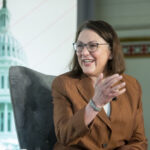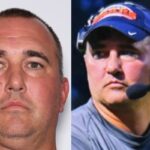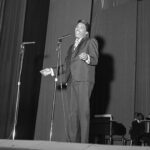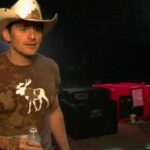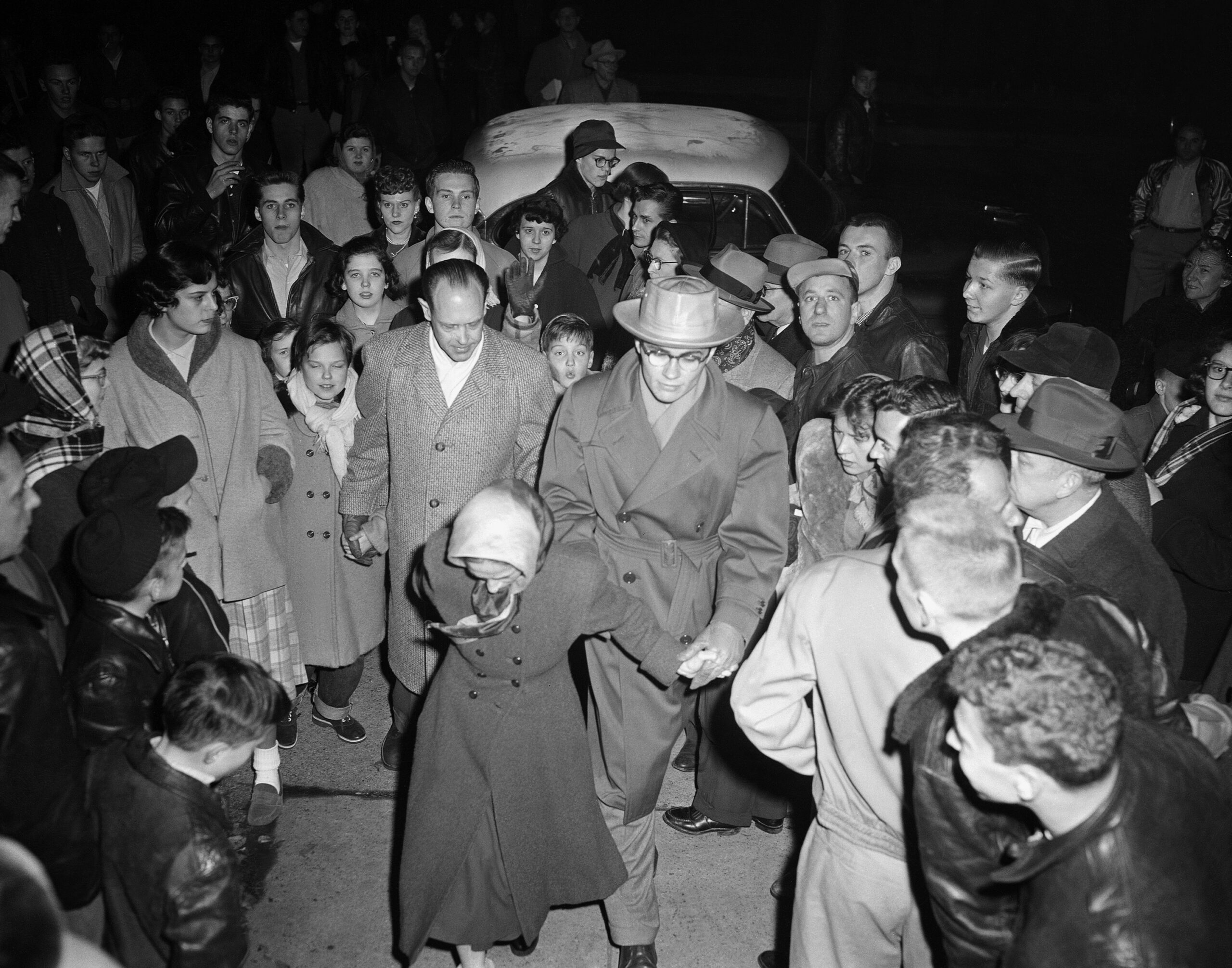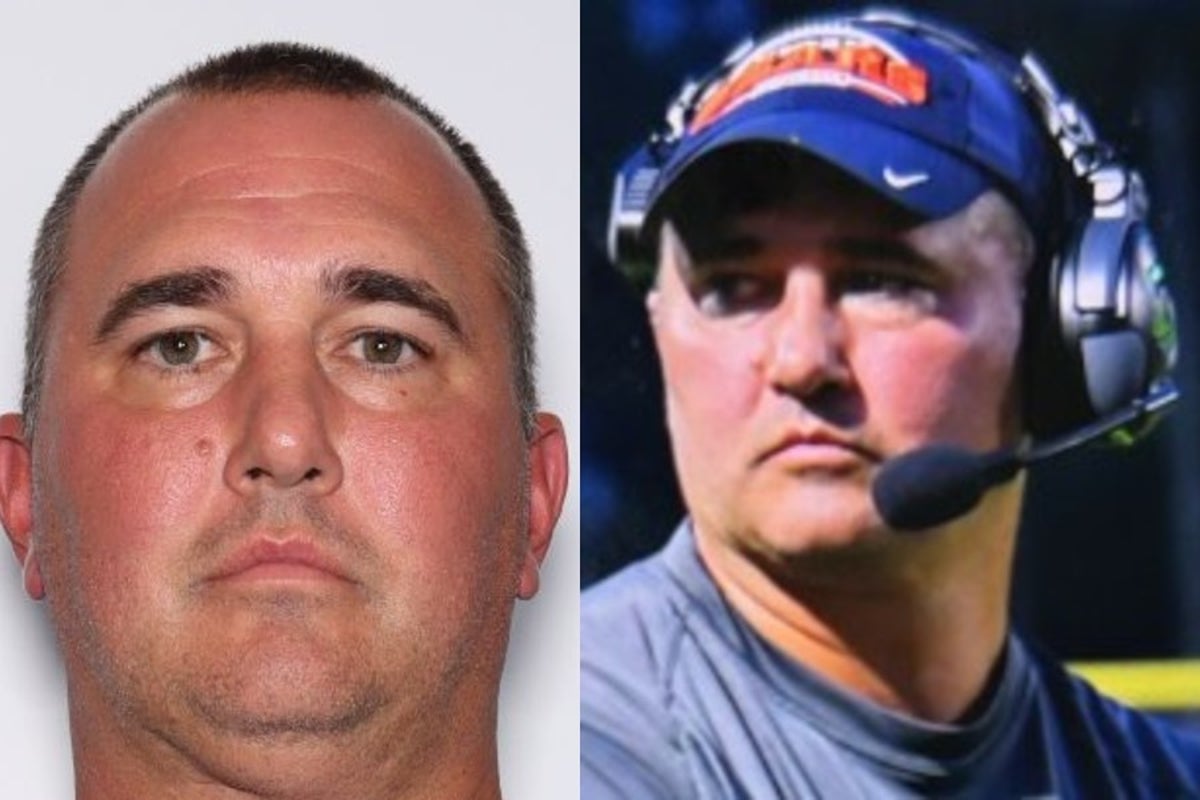On the night before Christmas in 1954, a Chicago housewife named Dorothy Martin begged her followers to step outside, sing together, and wait, at last, for the aliens.
Things hadn’t been going well for Martin, the leader of a small UFO-based religious movement usually known as the Seekers. She had previously told her followers that, according to her psychic visions, a UFO would land earlier that month and take them all to space; afterwards, a great flood would bring this fallen world to an end.
Research based on recently unsealed records claims the book When Prophecy Fails leans on lies, omissions, and serious manipulation.
When that prediction failed to happen, Martin said an updated psychic transmission—known as her “Christmas message”—had come through, saying they had spread so much “light” with their adherence to God’s will that He had instead decided to spare the world. She soon followed with another message commanding the group to assemble in front of her home and sing carols, again promising that they would be visited by “spacemen” who would land in a flying saucer and meet them on the sidewalk. Martin told the Seekers to notify the press and the public.
At 6 p.m. on Christmas Eve, the group gathered, sang, and waited; eventually, they retreated to Martin’s living room. A large crowd of journalists, curious gawkers, and some hecklers stood outside.

We know about these shifts because the Seekers were, unbeknownst to Martin or anyone else, full of undercover researchers covertly taking notes. The observers were primarily interested in what Martin and her followers would do when the aliens repeatedly failed to land. What transpired was recorded in a 1956 book, When Prophecy Fails, written by Leon Festinger, Henry W. Riecken, and Stanley Schachter. It is considered an enduring classic in the fields of new religious studies, cult research, and social psychology.
One Seeker, the book reported, said they actually had spied a spaceman in the Christmas Eve crowd wearing a helmet and “big white gown,” adding that he was invisible to nonbelievers. But in the face of another no-show, a more common response in the group, the authors reported, was to continue to insist that the spacemen would yet come, and their belief would not be in vain. The repeated “disconfirmation” of their beliefs that December, the researchers claimed, only strengthened their faith, and made them more eager to reach out, to convert nonbelievers, journalists, and anyone else who would listen.
The book is gripping, an in-depth social and psychological study of Martin’s group and how they behaved, both as it was forming and after their prophetic visions failed to take place. It has served as a key basis for the psychological concept of cognitive dissonance: what happens to people when they hold conflicting beliefs, when their beliefs conflict with their actions, or when they clash with how events unfold in the real world. The theory was taken further by Festinger, who wrote a widely-cited followup book on cognitive dissonance and how people try to engage in “dissonance reduction” to reduce the psychological pressure and unease they experience when confronted with conflicting information.
But a new study that examined Festinger’s recently unsealed papers claims that Prophecy leans on lies, omissions, and serious manipulation. The article, published this month in the peer-reviewed Journal of the History of the Behavioral Sciences, also argues that, contrary to the researchers’ longstanding narrative, the group members all showed clear signs of quickly abandoning their beliefs when the UFOs failed to arrive, and that the group soon dissolved.
Thomas Kelly, the paper’s author, found that while core members of the group stayed active in UFO spaces, they did not keep insisting on a world-ending flood, or that aliens would land and take them away. To the contrary, Kelly says, the Seekers were quick to disavow those beliefs. Even Martin herself rebranded, insisting to an interviewer that she had never believed she’d be taken away by an actual spaceship.
“Dorothy Martin distanced herself completely from these events, even rewriting the story of how she developed her psychic powers,” Kelly writes in the paper, shifting from claiming they had emerged after she awoke one morning with a tingling sensation, to a story where they came about after “she had been in a car accident, developed cancer, and was miraculously healed by an appearance of Jesus Christ,” as she told an interviewer in the 1980s. “The failed prophecy and Christmas message were omitted entirely,” Kelly writes, from her later narrative.
Kelly’s paper not only undercuts the researchers’ claims and their application of the theory developed from them, but also alleges they committed scientific misconduct, including “fabricated psychic messages, covert manipulation, and interference in a child welfare investigation.”
“The conventional wisdom is just wrong.”
Subsequent studies of new religious movements failed to replicate Prophecy’s findings, which isn’t surprising: a well-known replication crisis has shown that findings in psychological studies often can’t be repeated. But in the worlds of psychology, social science, and the study of UFO cults, the book has has remained a narrative juggernaut, influencing how we talk about cults, systems of belief, what it takes to change one’s mind, and why people cling to “unreasonable” or disproven beliefs. (In over a decade spent reporting on conspiracy theories and alternative belief systems, I have repeatedly cited the book myself.)
Kelly hopes his paper will show that “the conventional wisdom is just wrong. The expected outcome of a failed prophecy, what normally happens, is that the cult dies.”
Kelly, a conservative-leaning researcher who’s worked on biosecurity and health policy, is not a social scientist or an expert on cults or new religious movements. Previously a fellow at the Horizon Institute for Public Service, a think tank that says it bridges the worlds of technology and public policy, today he says he works as a “consultant for different advocacy groups” that he declines to name. He has advocated for tax credits for living kidney donors and written a paper on expanding access to pre-exposure prophylaxis (PrEP) for HIV. In addition to his Substack, he has written for right-leaning publications including the Federalist and City Journal. One could argue he’s pushed fringe ideas himself: a recent piece for the conservative Jewish magazine Tablet expresses concern about gain-of-function virology research, and gives credence to the idea that Covid-19 was created in a lab.
“This is a side project I care a lot about,” Kelly says of his work on Prophecy. He read the book a few years ago “out of personal interest” and found that it made him “really nervous.” He was bothered by the authors’ claims that Martin and the Seekers never tried to proselytize before their prophecy failed at the same time the book actually provides several examples of just that: Martin enthusiastically talked to journalists and anyone who would listen about her psychic visions, even after claiming she received a visitation from mysterious visitors warning her not to discuss them. Another member, Charles Laughead, sent letters to at least two editors promoting Martin’s prophecies.
Laughead and his wife Lillian were Martin’s two most important followers. Kelly was able to determine they, well before Christmas Eve 1954, were holding study groups at their house and engaging in aggressive outreach to try to tell the world about Martin’s visions. Charles Laughead, a physician, was actually twice fired by Michigan State University ahead of that Christmas Eve for trying to convert his student patients.
Given all this, the book’s claim that proselytization only took place after the Christmas message “nagged at me,” Kelly says. “It seemed like a strange interpretation.” He argues that the researchers twisted the group’s behavior to fit their thesis, downplaying the proselytization they did before the prophecy failed and playing up any proselytization that occurred after.
This interpretation is important, because the thesis of When Prophecy Fails is clear: after Martin’s failed prophecy, her group doubled down, not only by refusing to acknowledge that their core predictions had utterly failed, but banding together with a new zeal to spread them.
Both Prophecy and Festinger’s 1957 followup, A Theory of Cognitive Dissonance, argued that the group employed cognitive dissonance to maintain internal consistency. According to Festinger and his coauthors, Martin and her followers reframed how situations had transpired, made changes and justifications to what they said they believed, and rejected information that didn’t align with their beliefs.
“I can’t afford to doubt. I have to believe, and there isn’t any other truth.”
When Kelly looked at Festinger’s 1957 book, though, he felt that the details of the Seekers relayed there didn’t really match what was in Prophecy—that Festinger was, in his words, already “massaging” the facts to make them match his emerging theory of cognitive dissonance. For instance: while Prophecy concedes that a few people walked away from the group after disconfirmation, Festinger’s followup book describes a more total state of belief for everyone involved that grew even stronger after the disappointments of December 1954.
“The conviction of those persons who had met the disconfirmation together did not seem to waver,” Festinger wrote. “Indeed, the need for social support to reduce the dissonance introduced by the disconfirmation was so strong, and the social support so easily forthcoming from one another, that at least two of these persons, who before had occasionally shown some mild skepticism concerning certain aspects of the beliefs, now seemed completely and utterly convinced.”
Festinger’s papers, held at the University of Michigan, were unsealed in early 2025, giving Kelly more insight into the authors’ behavior during their time with the Seekers. Kelly says he was disturbed by what he found, including evidence of clearly unethical intervention and manipulation from the researchers and the observers they hired. He told me that he even found evidence the researchers briefly broke into Dorothy Martin’s house through a back door and looked around, though they found nothing of note; the incident is not mentioned in his published paper.
One focus of Kelly’s paper is Riecken, who immediately acquired a high-level of status in the group—he was even dubbed “Brother Henry”—for reasons that, Kelly writes, weren’t clear. The archival materials, he writes, show that Riecken manipulated his position “to shape group behavior including… pivotal events” in December 1954.
For example, according to notes by Riecken that were included in Festinger’s papers, after the spacemen initially failed to land that month, Riecken decided to bitterly mock Martin, calling a new psychic message she offered after the first time no aliens turned up “pretty dense.” Then he went aside with Charles Laughead, told him he was struggling with a lack of faith, and begged Laughead to reassure him. Laughead did so, responding with a long monologue about the need to stay committed.
“I’ve given up just about everything,” Laughead declared, according to Riecken. “I’ve cut every bridge. I’ve turned my back on the world. I can’t afford to doubt. I have to believe, and there isn’t any other truth.”
Riecken then returned to the group, proclaiming his doubts were gone and his faith restored. Reassured, Martin brightened and began frantically writing what would become her Christmas message. “Martin’s despair, Laughead’s defiant affirmation of belief, and the Christmas message were all driven by Riecken,” Kelly concludes.

Kelly writes that another paid observer, Liz Williams, also ingratiated herself to the group—even becoming part of the Laughead household—under false pretenses, claiming to have had psychic visions, including “a mystical dream in which a mysterious, luminous man rescued her from a flood.” According to Kelly’s research, she also tried to manipulate another, less popular group member—one Williams admitted to finding “stupid” and disliking—into thinking she was psychic by performing automatic writing sessions in front of her. “So much of her writing is about how much she hates this one woman,” Kelly noted dryly in our interview; in an appearance on the Conspirituality podcast, Kelly describes the research team as being “gleeful” about how “easily fooled” group members were.
“I wouldn’t have published this.”
The interference Kelly uncovered goes beyond manipulation. At one point, he writes that the Laugheads were being investigated by family services agents after Charles’ sister had contacted his bosses at Michigan State, concerned whether the Laugheads were fit to care for their two children. Williams and another observer, Frank Nall, intercepted a social worker affiliated with the university who had been sent to the Laugheads house, told her about the ongoing study, and instructed her not to interfere. The social worker, under pressure from her boss at the university, dropped the matter. (Prophecy notes that the Laugheads won a court case over their parental rights and moved their family away soon after the books’ events.)
Williams and Nall got married after their time at Michigan State and had a child together. Williams died in June at 99 years old, after a long career as a professor, researcher, and women’s rights advocate. Nall himself, now 100, has only spotty memories of his role in the study, and none of the incident involving the social worker. (“That was 75 years ago, how the hell do you expect me to remember that?” he said in a brief phone call, laughing.)
As for “Brother Henry,” Kelly writes that the researchers exploited Riecken’s exalted position in the group to the very end: “As the study wound to an end, the researchers wanted to gather additional information, so they invoked Brother Henry’s spiritual status,” having him proclaim himself “as the ‘earthly verifier’ who had been tasked with comparing the accounts of the members to what was already known to the Space Brothers.” Under that guise, he had Seekers sit with him for interviews and gained access to “private documents and ‘sealed prophecies’” belonging to Martin. According to notes by Riecken and Schachter, Riecken examined the box holding them, bound it with his own magical “Seal of Protection,” as the researcher called it, and gave it to another paid observer.
“This contradicts the account in When Prophecy Fails,” Kelly writes, which claimed the box had been obtained from a true believing member they called Mark. The authors even claimed that Mark, Kelly writes, “wanted to open the box to retrieve some of his own documents that had been sealed in there, but was unwilling to do so since it would risk breaching the seal.” The authors, he charges, “use this apparently fabricated incident as an example of belief surviving disconfirmation.”
One professor with extensive experience in archival research, cults, and religious studies isn’t persuaded by the arguments in Kelly’s paper, and isn’t convinced it meets the rigorous scholarly standards they would expect from a peer-reviewed article.
“I wouldn’t have published this,” says Poulomi Saha, a University of California-Berkeley associate professor in critical theory who is writing a book on the cultural fascination with cults. “This author ends up doing what he accuses the authors of When Prophecy Fails of doing, which is cherrypicking evidence,” says Saha, who reviewed Kelly’s paper at my request. Kelly used “a fairly narrow reading of limited archival materials,” Saha says, to argue that the researchers were “the singular lynchpins of what happens to this group,” as with Kelly’s interpretations that Laughead only delivered his monologue on continuing to believe because Riecken coaxed it out of him, and that Martin only wrote her Christmas message because of his influence as Brother Henry.
Saha was also concerned by Kelly’s admission that he could not read one of Martin’s notes he found in Festinger’s archive, which he describes as revealing that she told Brother Henry he was “the favorite son of the Most God.” Kelly writes in an endnote that the note saying this “was written in faded ink in an old‐fashioned style of hand‐writing (cursive) on thin paper which I found difficult to read.” Kelly says that he used ChatGPT to decipher the text, which, Saha says, “wouldn’t pass muster with any real historian.” (Kelly concedes the words AI determined to be “the Most God” were completely indecipherable to his own eyes, but says that was the only place he relied on a machine interpretation of the text.)
“We’re talking about different academic and scholarly methods 70 years ago.”
Saha also says the way Prophecy is generally viewed today is more nuanced than Kelly suggests. “It’s considered a really interesting case study. It’s not considered a definitive psychological theory.” It is never cited, they say, “as the reason some other event should be credible or not.”
Overall, Saha says Kelly’s paper “asks good questions,” ones that they hope will prompt other scholars to reevaluate Prophecy by also delving into Festinger’s archives. “If we want to critique the methods and think about how methodology has changed in 70 years, I would encourage that,” Saha adds. ”We’re talking about different academic and scholarly methods 70 years ago around things like participant observation.”
Indeed, unethical and grossly manipulative science was far from uncommon at the time the Prophecy authors were working. The Tuskegee experiments, a 40-year syphilis study in which Black men were left untreated, were ongoing. The CIA mind control experiments known as MKULTRA began in 1953; before they were halted in 1973, both soldiers and civilians would be drugged with LSD, barbiturates, and amphetamines, usually without their knowledge or consent. In the 1940s and ‘50s, children at a Massachusetts school were secretly fed irradiated oatmeal in a study funded by the U.S. government and Quaker oats; survivors were eventually paid a $1.85 million settlement.
In that way, the alleged misconduct from the Prophecy researchers isn’t unusual, Kelly concedes: “It’s disappointing—it’s not surprising.” Other famous midcentury psychology studies also came under fire after a hard look, he points out, including the Stanford Prison Experiment, which purportedly demonstrated that people given the role of prison guards would quickly deploy brutality if ordered to do so, but which has been undermined by revelations of sloppy methodology and unethical researcher interference. An account of the murder of New York woman Kitty Genovese gave rise to a host of studies on the so-called bystander effect, but the notion that people watched idly while Genovese was killed has been proven false.
“The academic standards in the ‘50, ‘60s, and ‘70s were perhaps not as high as they are today,” says Thibault Le Texier. He’s an associate researcher at France’s European Centre for Sociology and Political Science who reviewed a previous version of Kelly’s paper favorably when it was submitted to the journal American Psychologist. (It was not accepted; Kelly says the version was written before he gained access to Festinger’s files.)
It was a “time of great enthusiasm for psychology,” Le Texier says, when “you could do quite strange and uncontrolled studies” that would no longer be authorized. “When you look at the methodology of these studies, it’s based on a few elements or pieces of evidence. The experiment is not well controlled.”
Le Texier’s 2018 book critiquing the methodology and conclusions of the Stanford Prison Experiment was recently translated into English, and has been hailed in the scientific world as a serious challenge to the research’s validity. (Philip Zimbardo, the experiment’s lead researcher, who died in 2024 at the age of 91, defended the his work after Le Texier’s book was published in French and, in a 2020 paper, accused Le Texier of making “unusually ad hominem” attacks.)
“My research is really bad for the integrity of When Prophecy Fails, and bad for its use in new religious studies,” Kelly told me recently. That said, he adds, “in itself it doesn’t show that all cognitive dissonance theory is wrong.”
Le Texier agrees. “Cognitive dissonance theory has been proven on many other occasions,” he says. “There’s very strong literature on the subject. You can’t debunk the whole concept based on one experiment that’s flawed. It casts doubts on the seriousness of the authors and casts a dark shadow on their other work. But the theory of cognitive dissonance is a concept that lives on.”
Earlier this year, Kelly published another paper in a different journal arguing that “group demise” is a more common outcome after disconfirmation occurs. That’s also more or less what he found happened to the Seekers, even if Martin’s Christmas message after the aliens first failed to come briefly delayed its breakup.
“If Festinger’s theory of cognitive dissonance is right, reappraisal of the value of When Prophecy Fails may be slow.”
“Rather than immediately admit to a hostile press that their beliefs were false,” he writes, “they instead acted as if their beliefs were true for up to several days after the prophecy failed.” Given that short timeframe, Kelly argues that the 1956 book’s authors wildly overstated the importance of their findings when they claimed “that their case study provided insight on the origins of the Christians, and the Millerites, and the Sabbateans who maintained their beliefs for years (or millennia) after outside events proved those religions wrong.” Kelly, an Episcopalian, argues it did no such thing, with the authors failing “to show any evidence of long‐term persistence of belief” of Martin’s UFO prophesies.
Sometimes, though, people’s belief or lack thereof is not black-and-white, says Saha, the Berkeley professor, especially when judged from the outside. ”A failed realization does not always mean a loss of belief,” they explain. “You continue to believe and the world now says you’re wrong. That’s a profound psychological barrier to talking about it… We can’t know what people believe—only what they say.”
“That’s the question that this author doesn’t have any room for,” Saha says, finding Kelly “very dismissive” of the fact that group members continued to believe in UFOs.
After the failure of Christmas Eve, Kelly writes, the Seekers quickly dissolved. Martin briefly went into hiding, concerned she might be charged with disturbing the peace or contributing to the delinquency of a minor. She soon left Chicago and relocated to a “dianetics center” in Arizona, according to Prophecy. (Martin had been an early Scientology practitioner, in addition to her many other interests.)
“Exactly what has happened to her since, we do not know,” the Prophecy authors wrote, adding that, judging from a few letters received by the researchers and her followers, “she still seemed to be expecting some future action or orders from outer space.”
It isn’t true, Kelly argues, that Martin disappeared. She actually quickly and publicly recanted, telling Saucerian magazine in 1955 that she “didn’t really expect” to be picked up by “a spaceman.” Yet Prophecy, published in 1956, depicts her, in Kelly’s words, as “completely committed.”
“Within 2 years,” Kelly writes in his paper, “Martin was publicly denying any ability to predict the timing of cataclysms.” She would go on to a long and fruitful career in the New Age movement, renaming herself Sister Thedra, living mostly in Mount Shasta, California and throughout the Southwest, and transmitting psychic messages that she said had been delivered by various astral entities.
One of Kelly’s central points is that the main subjects in Prophecy were reachable and findable, and indeed, spent a lot of time talking to UFO magazines. The Laugheads and Martin even met up briefly in Latin America to study aliens again. So why didn’t anyone uncover this before?
The elisions in the book could have been clear, Kelly writes, had “anyone sent a postcard to Dorothy Martin, Charles or Lillian Laughead, or their daughter,” he says, concluding the book “could have collapsed decades ago.”
“You could have asked Dorothy herself,” Kelly says, or several other Seekers. Despite the pseudonyms deployed in the book, he says, “they weren’t hard to find.”
“My research is really bad for the integrity of When Prophecy Fails, and bad for its use in new religious studies,” Kelly told me. But he is realistic in his paper that his critical look at Prophecy may never be widely accepted—ironically, because its alleged inaccuracies might create some cognitive dissonance in the fields it has influenced.
“If Festinger’s theory of cognitive dissonance is right, reappraisal of the value of When Prophecy Fails may be slow,” Kelly writes in the paper. “If he is wrong, perhaps reappraisal will be swift.”
“If you spent a lot of your career teaching and citing this, it’s hard,” he told me.
“There are findings that people want to hear and findings that people don’t want to hear,” Le Texier says. “If studies such as the Stanford Prison Experiment and When Prophecy Fails gained a lot of attention and will probably continue to, in spite of being debunked, it’s also because these are fascinating stories, as riveting as a great movie.”
For now, at least, Prophecy continues to be widely referred to as a classic of the genre. The aliens, it must be said, have not yet landed.
